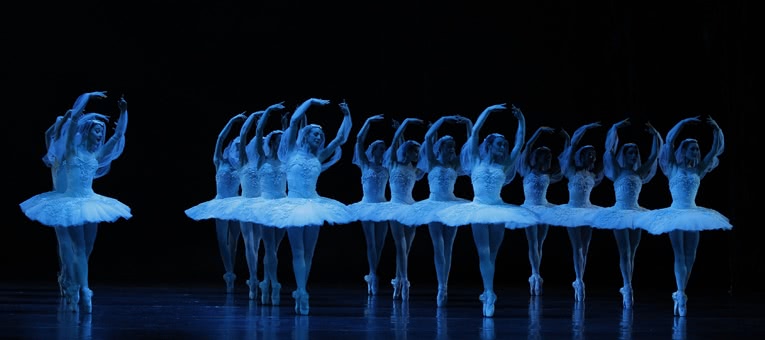Stanton Welch wanted nothing to do with dancing throughout his adolescence. Having parents who are widely respected as two of Australia’s premier dancers likely played a large part in this decision. After all, few teenagers want to grow up and be their parents. The real surprise isn’t that Welch would eventually drift into the world of dance, rising through the ranks until reaching his current position as artistic director at the Houston Ballet and resident choreographer for the Australian Ballet, but that he didn’t follow through on his rebellion and become an investment banker or neurosurgeon. Plus, his name is something straight from an Elmore Leonard story.
“Well, it’s an interesting thing,” Welch laughs as he recounts the genesis of his name. “My mother’s side of the family had all been Stan-something. They’d been a Stanislaw, a Stanley, a regular old Stan. My parents were on tour dancing in America, where Stanton is a rather common surname, and they saw it on a gravestone and liked the sound. It was a name they hadn’t heard before, and look, it had a ‘Stan’ in it. As a child I hated it, of course. Who wants a name from a gravestone?”
When one thinks of a dancer’s upbringing, the immediate image that springs to mind is the young child pirouetting before a mirror, practising their batterie and port de bras with obsessive zeal. Welch, however, was able to delay his induction to the family business for quite some time. While this is possible for a ballerino, girls don’t quite have such a period of grace.
“I think certainly for a young lady it would be difficult to start dancing after the age of, say, ten or 12,” Welch says. “But men, as long as they’re active, already limber and have the right physicality for it, it’s achievable. It’s the pointe shoe that tends to eliminate the girls from learning late. If a young lady wanted to learn contemporary dance that isn’t en pointe and started late…” He gives the idea some thought. “It just depends on how active you are. I was always a sporty kid. I did gymnastics, I swam a lot, so I had a level of flexibility and coordination that really helped. I think that’s why Australians in general are such strong dancers, because sport is such a part of our childhood. You almost can’t be an Australian and not play cricket as a boy at Christmas gatherings.”
With La Bayadère, Australian audiences can get a first-hand taste of this notoriously complicated production. Mounting a ballet that features some of the dance world’s most recognisable scenes – notably, ‘The Kingdom Of The Shades’ – and strikes a balance between the restrictions of an established performance and delivering fresh interpretation is something of which Welch is keenly conscious.
“With each ballet I feel it’s going to be a little bit different. With Bayadère, I really focus throughout on the dancing. For example, there are instances where we stop moving the story and someone walks forward to perform a variation. In a ballet like Romeo & Juliet, which I’m doing here in Houston, it’s the opposite of that. There is no break in the story, it unfolds like a play. But La Bayadèrewas very different. ‘Here is the Dance of the Four Girls, now have some acting,’” Welch chuckles. “Here I like to think when you watch the ballet the story is clearly told, but also quickly told. Dance is just as expressive as acting. It’s just in a different form.”
La Bayadèreis playing at theJoan Sutherland Theatre, Sydney Opera House fromThursday November 6 to Saturday November 22, tickets online.

































